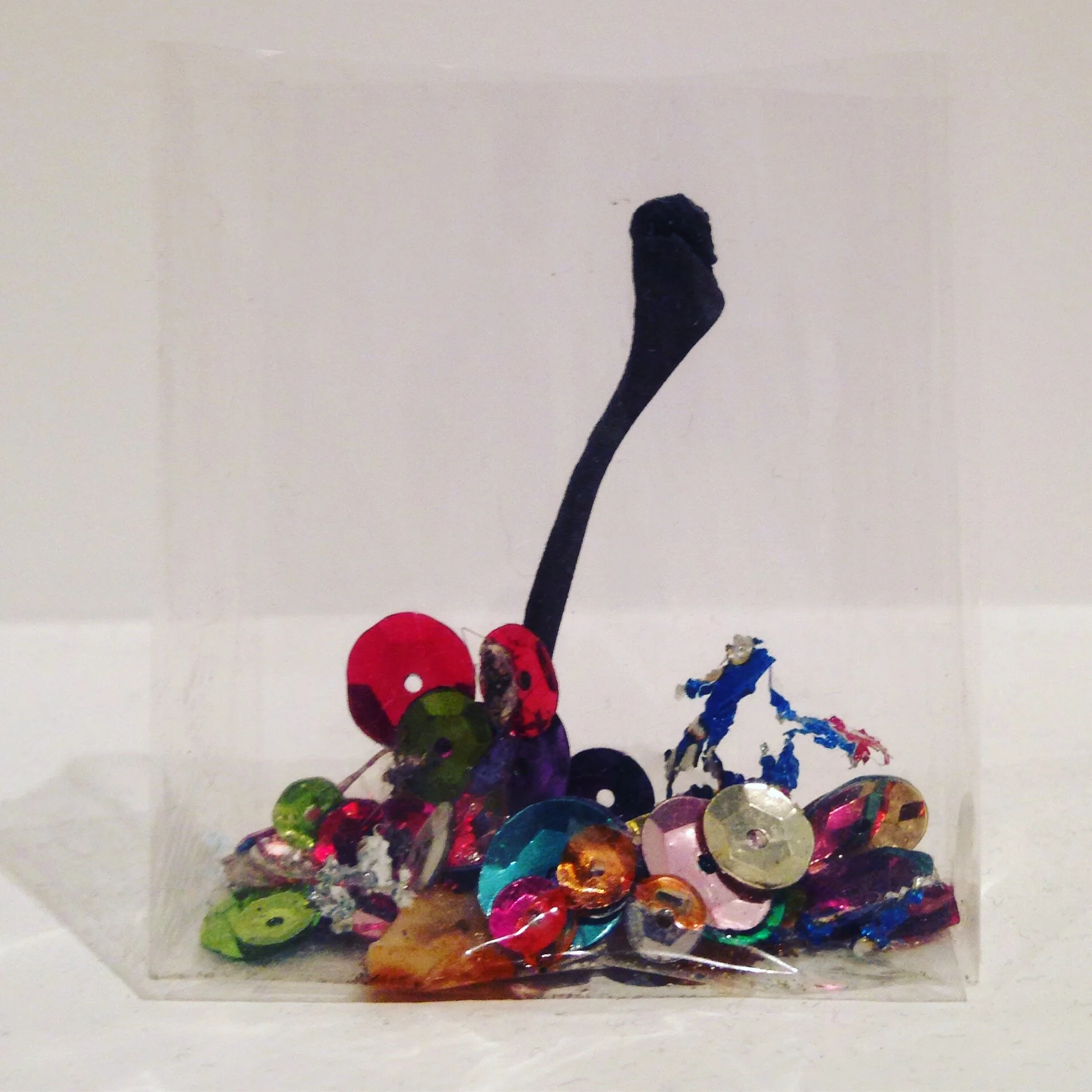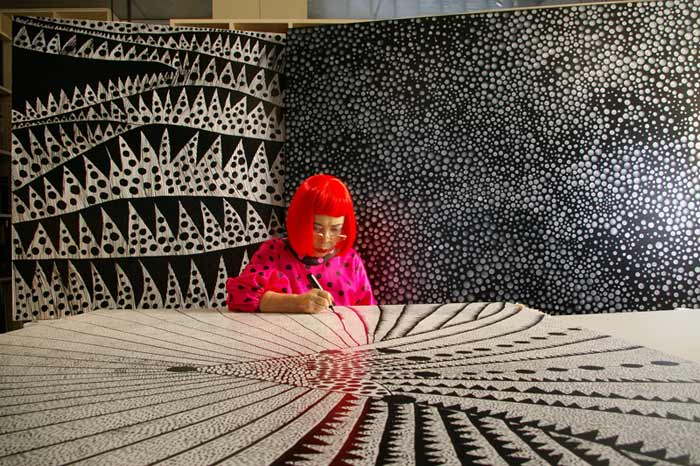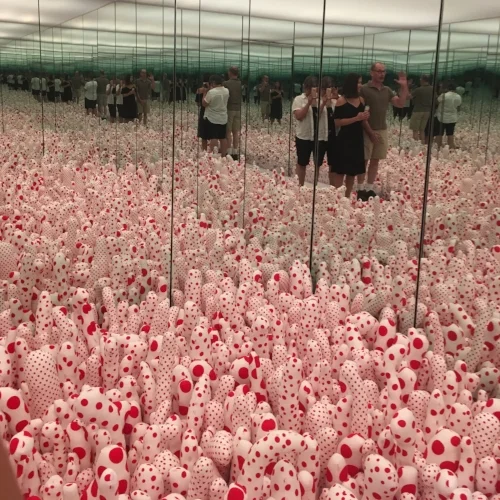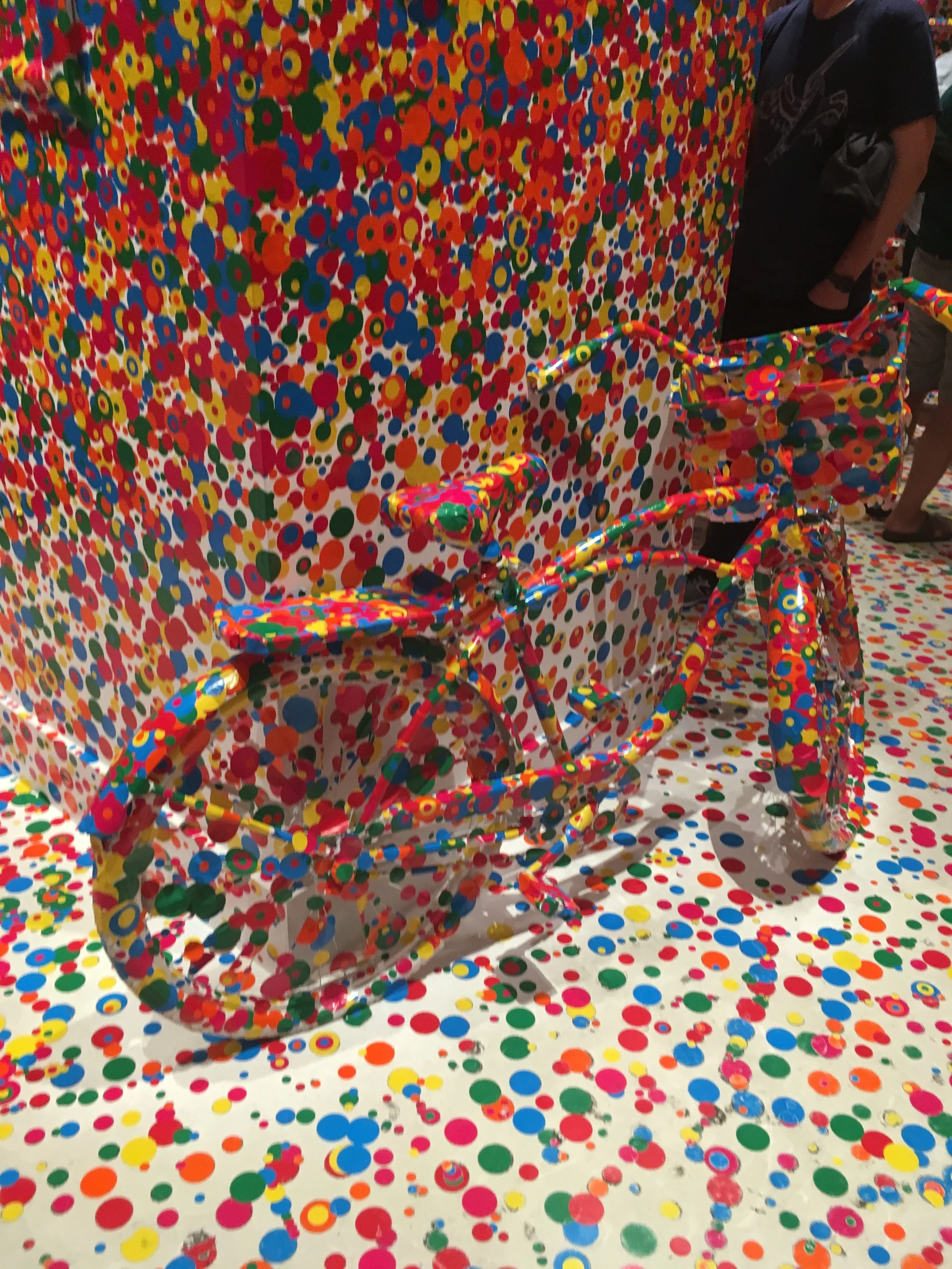You may have already seen the art of Mia Weinberg and not even known it. She creates public art. Her illuminated nature map was seen at the Richmond Skytrain Station. She designed another nature map for the floor of the Delbrook Community Centre in North Vancouver. Public art enlivens our everyday lives, but we seldom recognize the artist or the effort.
In this blog series, I'm interested in discovering what triggers people to turn to art after another career. In Mia's case, it was not a single turning point, but a series of leaps.
Mia came to art through a very circuitous route. She grew up in England and although she loved art as a child, she believed that real artists had an innate ability to draw. Although she excelled at pottery and screen printing, she couldn’t draw and thus believed that she wasn’t creative enough to be an artist. She went on to study materials technology and became a packaging designer in the plastics industry.
But after nearly a decade of hard work and success, she made a bold decision. She was going to rent out her house, quit her steady job, and move to Vancouver to explore her artistic side. She explained to her puzzled friends and worried parents that this would be the gap year that she had never taken.
Why did Mia make such a drastic change? It was a combination of things. Her job had shifted and she was looking for a change. Her milestone thirtieth birthday was approaching. Her sister had just gotten married—in Vancouver.
After arriving in Canada, Mia dove into the creative life and took art classes. After her “gap year” was over, she decided to stay in Vancouver, applied for her visa, and found a job. Eventually she enrolled in the fine arts program at Emily Carr University.
But even though she had moved much closer to her childhood dream of being an artist, Mia's pragmatism still won out and she chose the industrial design stream. Her immigrant parents ingrained a strong work ethic in Mia, which meant she prioritized the responsibility to support herself. Night shift work at the post office financed her while she was at art school.
Her second turning point came at a summer retreat for personal development with new friends from art school. Mia realized what was really important to her was fine arts and freedom of personal expression. She switched from industrial design over to painting and photography, and began experimenting with photograms. Photograms allowed her to express her love of nature and natural forms. (You can see one of her photograms in the studio photo above.)
After graduating from Emily Carr, Mia continued with the photograms and her work at the post office. Then an opportunity arose for her to work with an art consultant. This job was more related to her art practice and its part-time hours allowed her to work on her art. At work, Mia created proposals and presenting to businesses—all new experiences for her.
The final turning point for Mia came when she was invited to apply for a public art project in Edmonton, which combined natural forms with granite. Public art was a perfect synthesis for Mia. The Edmonton project combined the nature themes of her photography, her work in industrial materials, and the business aspects of her art consulting. She loved the experience and began to apply for more public art projects.
A public art career is different from a studio practice. Mia applies to cross-Canada competitions for public art pieces. She develops a concept and then researches the materials involved---like the engraved granite she used in Edmonton. Her proposal includes: the artwork concept, a construction schedule, and a budget. The budget includes artist fees. After writing and submitting a proposal, she waits to hear if she has won the competition. Delays are common, and it can take months or even years before the artwork actually happens. Her schedule is tough to predict and years can be crazily busy or scarily empty.
Naturally, the more public art you create, the more well-known you become and the easier it is to win competitions. For Mia, her dream is to become so renowned that she will get to skip competition process. The day I interviewed her, she was finishing a proposal, and waiting to hear about two others. However precarious this life might be, Mia loves her public art practice. For the first time since she quit her job in England, she works full time in art alone.
Mia's art career has lessons for other creative people looking to pursue their dreams.
Don’t give up your day job.
Mia walked the tightrope between creative dreams and practicality. Although she was drawn to art from the beginning, she resisted the impracticality of an art career. She worked first in an art-adjacent field—packaging design—to make a living. In this way, she built up a nest egg that allowed her the financial freedom to take off for Canada and art school. Throughout her art career, she maintained part-time jobs alongside her art practice. Mia can proudly say that she has always supported herself.
But…your day job can inspire your art.
When Mia finally settled on public art, she was able to synthesize all her life experiences, something that a younger artist would not be able to do. Her work in industrial design, her interest in nature and photogram work, her art consultancy experience—all have come together in her current art. Most artists draw upon their lives and history to create art; the more experience you have to draw on, the more depth your art will have.
To see more of Mia’s artwork, especially the public art you may have already admired, check out her website.







